The Japanese yen surged to its four-month high versus the dollar after the Bank of Japan (BoJ) astonished markets by announcing the evaluation of its yield curve control (YCC) policy and broadening the trading band for the ten-year Japanese government bond (JGB) yield on Tuesday.
The BoJ maintained its broad policy settings, keeping short-term JGB yields at -0.1 percent and 10-year yields around zero. However, it allowed long-term yields to rise to 50 basis points on either side of its zero percent target from its previous 25 basis points.
Many observers perceived the decision as laying the groundwork for capping a decade of exceptional stimulus programs, despite the claim that the central bank would strengthen the sustainability of the monetary easing.
During the post-announcement press conference, BoJ Governor Haruhiko Kuroda requested to underline that the adjustment was not an interest rate hike but to strengthen the bond market function.
"Whatever the BoJ calls this, it is a step toward an exit."
 Multibank ReviewT&Cs apply, 18+
Multibank ReviewT&Cs apply, 18+ eToro Review74% of retail investor accounts lose money
eToro Review74% of retail investor accounts lose money Capital.com Review76% of retail CFD accounts lose money
Capital.com Review76% of retail CFD accounts lose moneyMasamichi Adachi, Chief Japan economist at UBS Securities
An ‘unexpected’ decision
The decision surprised investors who expected no changes until March when Kuroda would end his 10-year term.
"This was really out of the box," Bart Wakabayashi, branch manager of State Street in Tokyo, said.
He also said they are beginning to evaluate the market for an exit strategy. In terms of dollar-yen, he said, "we could see a break below 130. It's very much within reach this year."
The decision also surprised all 47 economists surveyed by Bloomberg. No one anticipated a change in December, even though most asserted that the bank should do more to enhance the efficiency of the bond market.
The unexpected decision can potentially upset international financial markets because the BoJ's unwavering defense of its 10-year yield cap acts as an anchor, indirectly lowering borrowing costs globally.
"This is a total surprise,” chief market economist at Daiwa Securities, Mari Iwashita, said. “As the market focus has been on the joint accord with the government and people let their guards down, the BoJ pushed through this adjustment.”
Masamichi Adachi, a former BoJ official and chief Japan economist at UBS Securities, expressed genuine surprise that Kuroda was prepared to have his reputation harmed further by being labeled “the bad guy.”
"Whatever the BoJ calls this, it is a step toward an exit,” Adachi said. "This opens a door for a possible rate hike in 2023 under a new governorship.”
In the run-up to this year's last BoJ meeting, there were speculations about likely future policies after Kuroda stepped down.
According to local media, Japanese Prime Minister Fumio Kishida intends to revise a decade-old agreement with the BoJ and probably add flexibility to the agreed two percent price target. The reports came after a crucial aide to Kishida informed Bloomberg this month that a new deal with the central bank is possible.
Yen against other currencies
The dollar last traded 2.93 percent lower at 132.91 yen after falling as much as 3.1 percent earlier to 132.68 yen, a level not seen since mid-August.
The 10-year JGB yield increased to 0.46 percent from 0.25 percent after the decision. It also pushed equivalent U.S. Treasury yields higher, with the 10-year yield reaching a new peak this month of 3.711 percent.
The U.S. dollar index fell 0.35 percent to 104.25, heading back to the midpoint of its trading range of 103.44 to 105.90 this month. The index pits the U.S. dollar against the yen and five other major currencies, including the Euro and Pound sterling.
Before the BoJ’s official release, the index had been progressing toward the top of that range as investors proceeded to weigh the Federal Reserve's message of higher interest rates for a longer period.
The yen's gains were widespread, with the Euro falling by as much as 3.3 percent to its lowest level since late September at 140.44 yen, and the Pound sterling dropped 3.3 percent, reaching 160.76 yen, its lowest since October 12.






